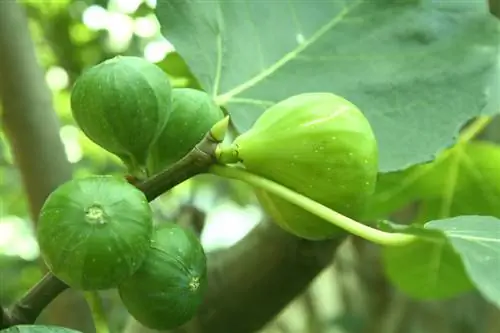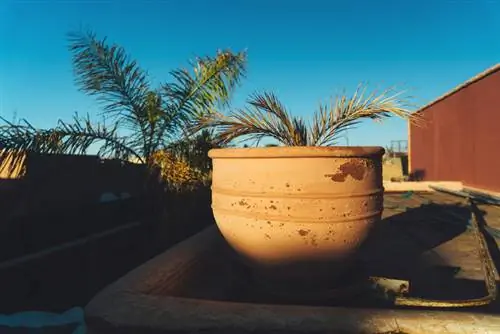- Author admin [email protected].
- Public 2023-12-16 16:46.
- Last modified 2025-01-23 11:20.
Palm trees are one of those plants that, with a little care, thrive for many years and become larger and more magnificent. What is important here is not only occasional repotting, but also correct fertilization, because for he althy growth, Mediterranean plants need nutrients tailored to their specific needs.

How should you properly fertilize palm trees?
For he althy growth of palm trees, a fertilizer with a lower phosphorus content than nitrogen and potassium should be used, e.g. B. 8-6-8 or 4-3-4. Organic fertilizers such as horse manure, cattle dung or horn shavings are particularly suitable. Fertilize during the main growing season from April to October.
The right fertilizer
You can often use a commercial foliar plant fertilizer. There are always three numbers printed on it, for example 8-6-8. These stand for the following trace elements:
- Nitrogen
- Phosphorus
- Potassium.
Palm plants need fertilizers in which the phosphorus content is lower than that of the other nutrients. The product listed in our example would be just as ideal as a 4-3-4 or 7-6-8 fertilizer for leafy plants.
Of course, you can just as easily use a special liquid fertilizer for palm trees in the dosage stated on the packaging. However, make sure that the nutrient ratio is correct here too.
Natural fertilizers for outdoor palm trees
Palm trees react particularly well to organic fertilizers, which are slowly converted by soil organisms. Very suitable are:
- Horse manure
- Cattle dung
- Horn shavings.
Since palm trees need a little lime, but are very sensitive to hard water, you can also give blue grain. However, it is harder to dose than other fertilizers and should never be administered in too high a concentration.
When is fertilization done?
Fertilize palm trees throughout the main growing season, which begins around April or May. To prepare for winter, stop fertilizing in October at the latest, preferably in late summer.
How much is fertilized?
How you need to dilute the product is indicated on the packaging. However, only fast-growing palm trees that increase in height every year require this dosage. Slow-growing varieties receive a maximum of 50 percent of this amount.
Observe natural nutrient requirements
Palm plants thrive in many regions of the world and in a wide variety of locations. Coconut palms growing in hot areas have completely different requirements than those plants that have to survive at altitudes over 1,500 meters. The plant label provides information about which type of palm tree it is and how you need to care for it and fertilize it.
Tip
Use fertilizers sparingly and never apply them in a higher dosage than stated on the packaging. A lack of nutrients is noticeable through stunted growth or leaf discoloration, but can be easily remedied. Overdoses, on the other hand, often cause such massive plant damage that the palm tree subsequently dies.






